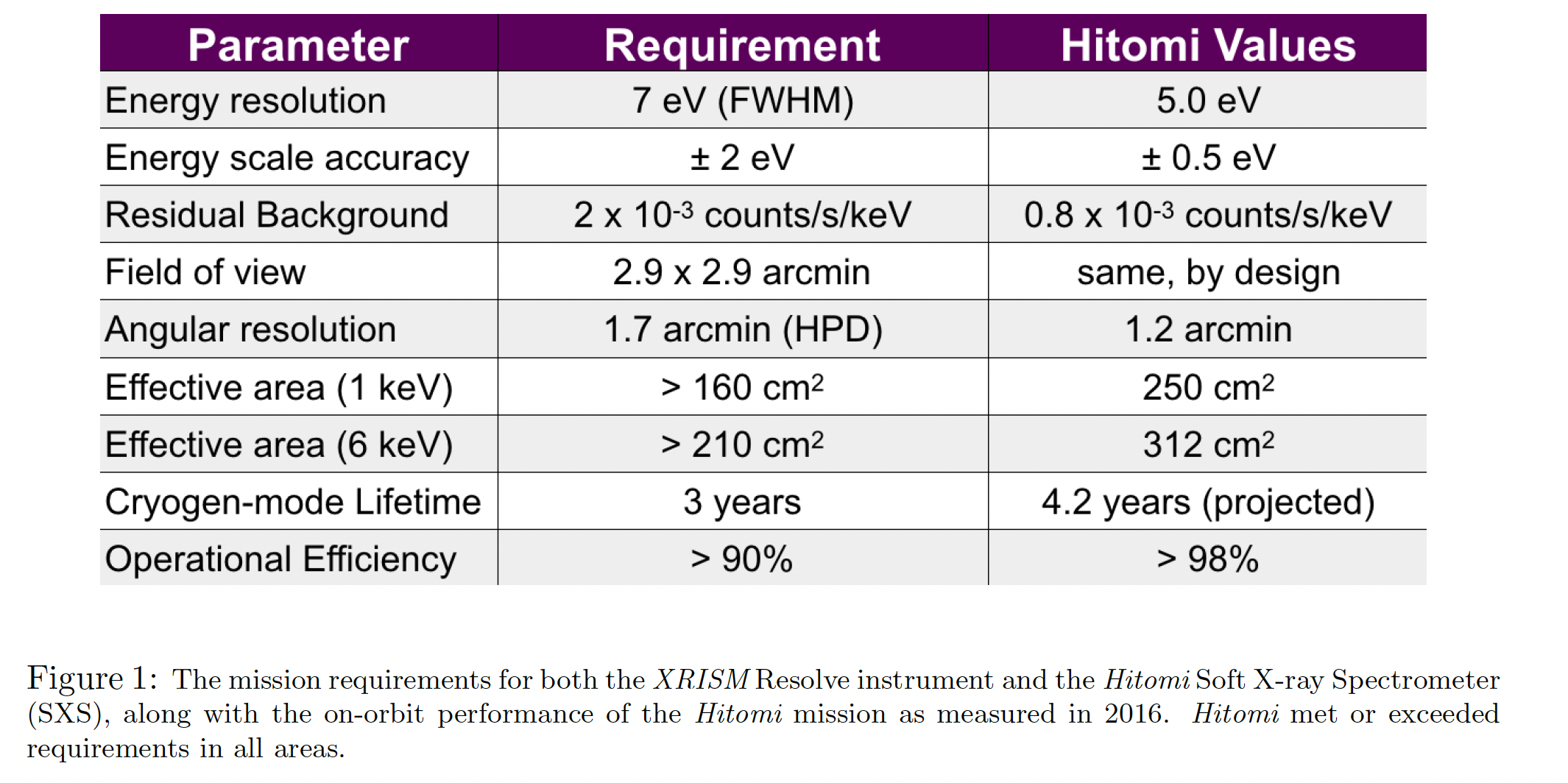Home - XRISM
XRISM in a nutshell
XRISM (X-Ray Imaging Spectroscopy Mission) is a JAXA-led X-ray observatory, developed through an international collaboration with NASA and ESA. Its goal is to recover in the shortest possible time the promises of the main scientific goal of the ひとみ (Hitomi) mission, whose operations were prematurely terminated by a series of abnormal events and mishaps triggered by the attitude control system. In particular, XRISM is posed to resolve astrophysical problems by precise high-resolution X-ray spectroscopy. It follows over 40 years of successfull X-ray observatories launched by JAXA, since 白鳥 ("Hakucho", meaning "Swan" in Japanese) in 1979.
XRISM will fulfill this promise with a highly complementary scientific payload, consisting of:
- Two identical X-ray Mirror Assemblies (XMA), delivering 1.3 arcmin in Half Power Diameter (HPD) Point Spread Function, and an effective area of about 300 cm2 at 6 keV
- A soft X-ray spectrometer (Resolve), equipped with a micro-calorimeter that will deliver a ≤7 eV energy resolution in the 0.3-13 keV energy band over an array of 35 sensitive pixels with a 3x3 arcminutes field-of-view
- A soft X-ray imager (Xtend), covering a 38'x38' field-of-view with a CCD detector ensuring an energy resolution ≤250 eV at 6 keV at the end of the nominal operational life
The instrument characteristics are similar to the SXS and SXI respectively flown on Hitomi, and XRISM is designed to achieve most of its original science capabilities. The following table summarizes the key XRISM payload performance requirements, compared with the achieved Hitomi in-flight performance (table extracted from Science with XRISM):

For a more comprehensive description of the XRISM mission, readers are referred to the list of XRISM publications (maintained by NASA).
MaiN XRISM SCIENCE GOALS
XRISM is designed to address the following main science topics:
- Structure formation of the Universe and evolution of clusters of galaxies;
- Circulation history of baryonic matter in the Universe;
- Transport and circulation of energy in the Universe;
- New science with unprecedented high resolution X-ray spectroscopy.
MISSIOn TIMELINE
The launch has taken place September 7, 2023, and the mission is planned to be operated in three phases:
- Phase 1 ("Performance Verification. PV, Phase") will be six months in duration, and will be allocated to observing targets defined by the XRISM Science Team. Limited access to PV data will be granted to a small number of additional scientists from the global scientific community, selected through a competitive process by the participating agencies prior to launch
- Phase 2 will be 12 months in duration. During Phase 2, observing time will be primarily allocated to Guest Observers through the AO processes open to the scientific communities of participating countries. Some Phase 2 time may be allocated to the observatory and XRISM Science Team targets that were not observed during Phase 1
- Phase 3 will commence immediately following Phase 2 and will continue until mission completion. During Phase 3, all available observing time, apart from time reserved for the observatory and key projects, will be allocated to Guest Observers through the AO process.
The nominal mission life is three years, which corresponds to the expected life of the liquid helium cryogen for Resolve. The ability to observe is expected to continue beyond three years using the mechanical cooling system.
CONTACT
Please contact the ESA Project Scientist.
- Removed a total of (1) style text-align:center;
- Removed a total of (1) style margin:0;








































 Sign in
Sign in
 Science & Technology
Science & Technology